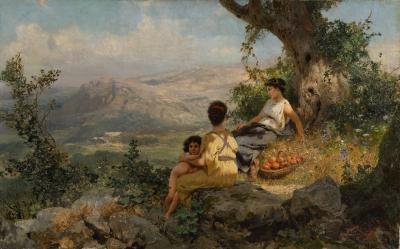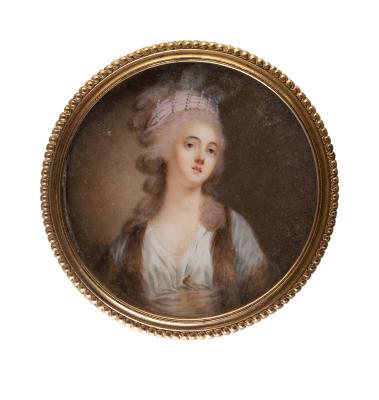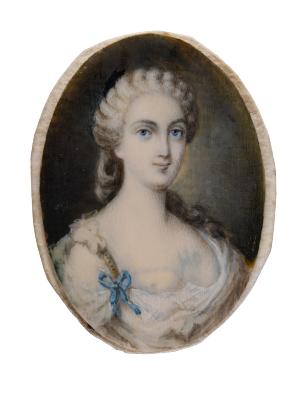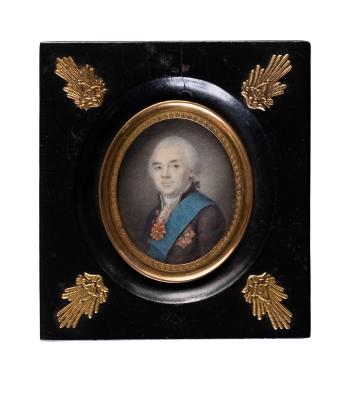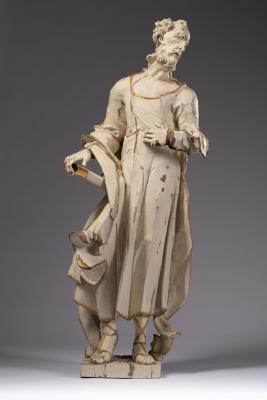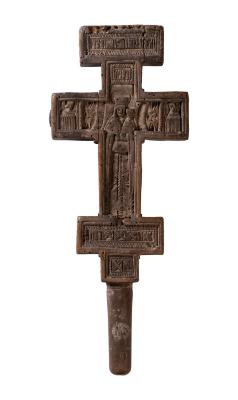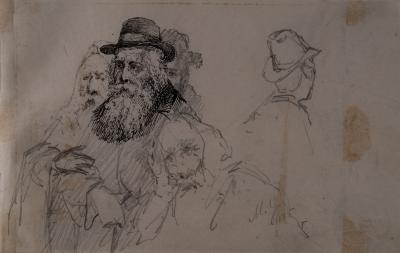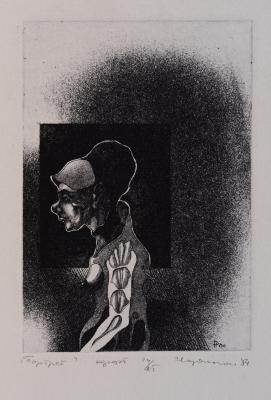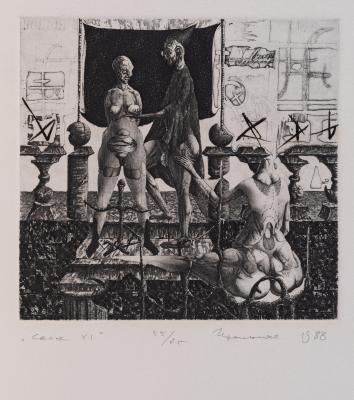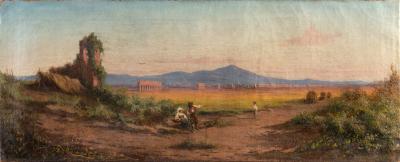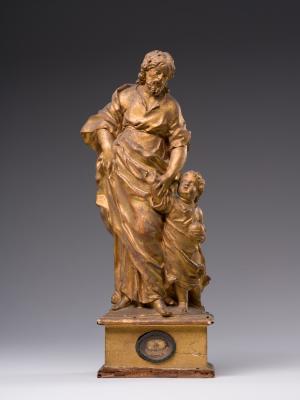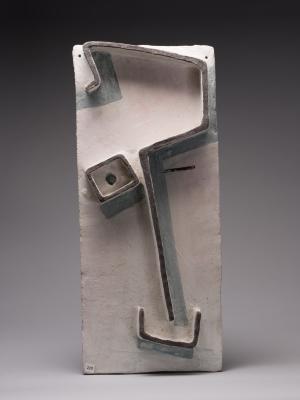The work is from the Neapolitan series. The composition is known from the album Raccolta di Cinquanta Costumi li più interesanti delle città, terre e paesi in provincie diverse del Regno di Napoli disegnati ed incisi all'acquaforte da Bartolomeo Pinelli Romano (Collection of Fifty Most Interesting Picturesque Costumes from Cities, Towns and Villages of Different Provinces of the Kingdom of Naples), published in Rome in 1816. Previously, in 1814, the engraving was issued in the album of the same name, but it was in a square frame. A young woman is depicted in festive clothing, carrying an Easter basket in her hands. She met a playing guitarist who was sitting on a massive boulder on the church road; his dog was depicted standing nearby. The girl is wearing a yellow and pink dress with a light ornamented apron; her head is covered with a headscarf; on her feet are red shoes. A man is dressed in blue clothing. A black hat is on his head, and on his feet are black shoes with blue tops similar to jackboots. On the stone next to him, a stick and a bright red drapery cover some objects, attracting the viewer's attention. The action is taking place on one of the hills. Low trees, a mountain range, and clouds in the sky serve as the background of the composition.
Civitavecchia is a mountain village in the province of Molise (it must not be confused with the Roman port of the same name).





